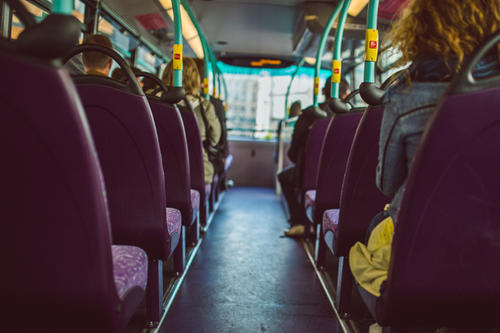
Annually updated research from the Accessibility Observatory at the University of Minnesota ranks 49 of the 50 largest (by population) metropolitan areas in the United States for connecting workers with jobs via transit.
The new rankings, part of the Access Across America national pooled-fund study that began in 2013, focus on accessibility, a measure that examines both land use and transportation systems. Accessibility measures how many destinations, such as jobs, can be reached in a given time.
Though rankings of the top 10 metro areas for job accessibility by transit only changed slightly from the previous year, new data comparing changes within each of the 49 largest U.S. metros over one year helped researchers identify the places with the greatest increases in access to jobs by transit. Kansas City improved more than 17 percent. San Francisco, which ranks 2nd for job accessibility by transit, improved nearly 9 percent. In all, 42 of the 49 largest metros showed increases in job accessibility by transit.
“This new data makes it possible to see the change from year to year in how well a metro area is facilitating access to jobs by transit,” said Andrew Owen, director of the Observatory. “Transit is an essential transportation service for many Americans, and we directly compare the accessibility performance of America’s largest metropolitan areas.”
This year’s report—Access Across America: Transit 2017—presents detailed accessibility values for each of the 49 metropolitan areas, as well as detailed block-level color maps that illustrate the spatial patterns of accessibility within each area.
Transit is used for an estimated 5 percent of commuting trips in the United States, making it the second most widely used commute mode after driving. The commute mode share of transit can be higher in individual metropolitan areas: 31 percent in the New York metropolitan area; 11 percent in Chicago; 8 percent in Seattle.
Key factors affecting the rankings for any metro area include the number of jobs available and where they are located, the availability of transit service, and population size, density, and location. Better coordination of transit service with the location of jobs and housing will improve job accessibility by transit.
The findings have a range of uses and implications. State departments of transportation, metropolitan planning organizations, and transit agencies can apply the evaluations to performance goals related to congestion, reliability, and sustainability. In addition, detailed accessibility evaluation can help in selecting between project alternatives and prioritizing investments.
The research is sponsored by the National Accessibility Evaluation Pooled-Fund Study, a multi-year effort led by the Minnesota Department of Transportation and supported by partners including the Federal Highway Administration and 10 additional state DOTs.
The Accessibility Observatory at the University of Minnesota is the nation's leading resource for the research and application of accessibility-based transportation system evaluation. The Observatory is a program of the Center for Transportation Studies. CTS is a national leader in fostering innovation in transportation.
The Transit 2017 report and other Access Across America research reports for auto, walking, and soon biking, are available at access.umn.edu.
Detailed interactive color maps illustrating the jobs accessible by transit in each metro area are available on the study web page at Access Across America: Transit 2017.
Accessibility Observatory director Andrew Owen is available for an on-camera interview (live shot or tape) via the University of Minnesota ReadyCam® studio, which is remotely controlled by VideoLink professionals and equipped with broadcast lighting, fiber optic and satellite capabilities, and a robotic camera.
- Categories:
- Science and Technology





